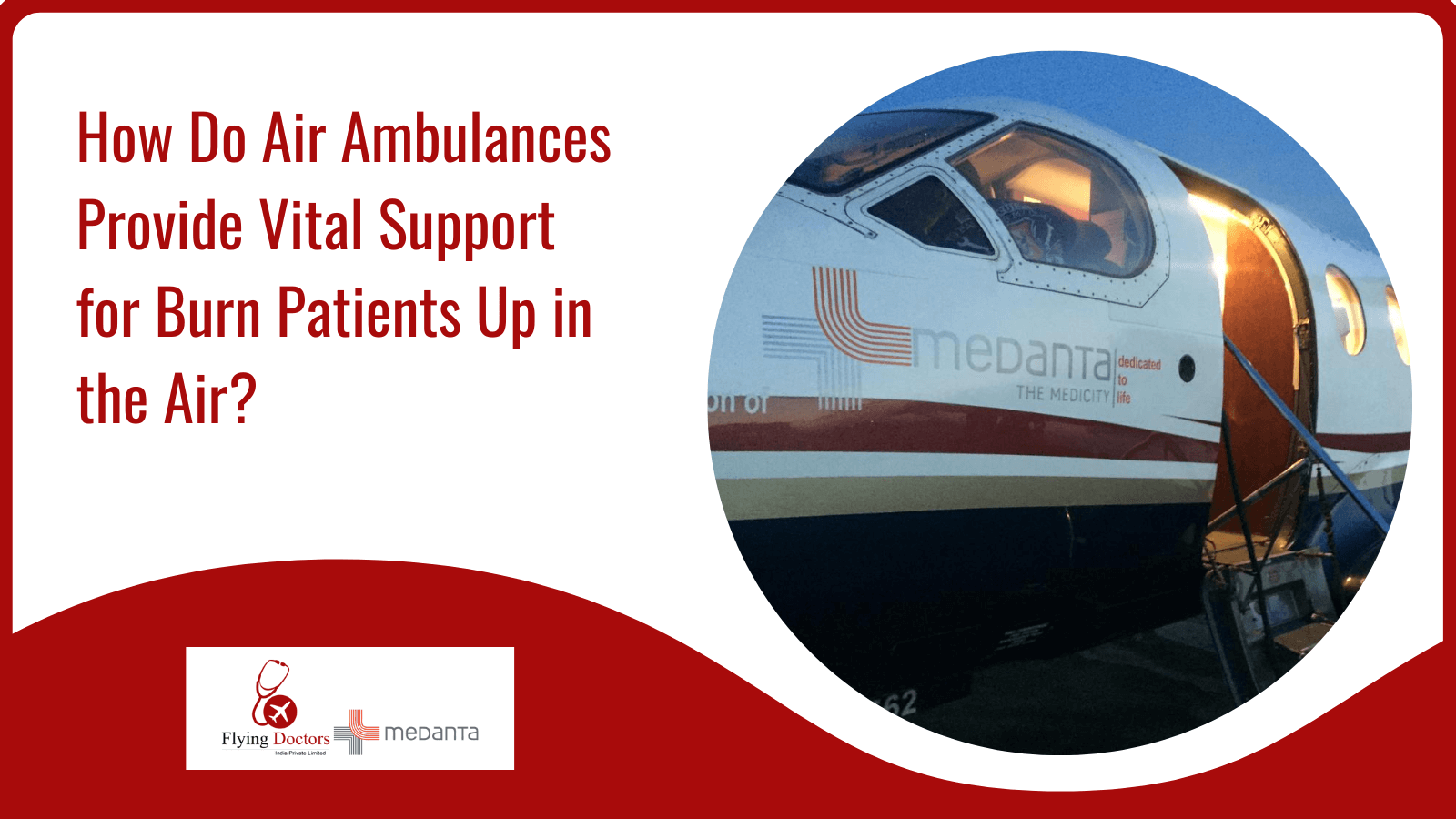A burn case is the most painful and life-threatening medical emergency, requiring quick action and specialized care. Air ambulance services become crucial in this case, as they provide a fast and efficient commute for patients to medical facilities, especially from remote or hard-to-reach areas.
A report suggests 70 lakh people suffer burn injuries yearly in India, with a mortality figure as high as 1.4 lakhs. The probable reason is the limited availability of medical facilities for severe burn cases in India. We have only four facilities in Delhi, Mumbai, Bhilai, and Bokaro, which can treat third-degree burns. In such a scenario, transporting burn patients from remote areas to these facilities is complex and results in an increased death rate of burn patients. However, with the prevalent use of air ambulances to commute burn patients, we can curb the gap.
Continue reading this to learn about the importance of air ambulances for burn patients and how their efficient services can ensure timely medical treatment.
What are Burn Injuries?
Burns are tissue damage caused by applying heat, electricity, chemical, or radiation to the body. The burns are of three categories depending on deep and severe penetration of the skin’s surface.
- First-degree (Superficial) burns: It affects only the epidermis or outer layer of skin, and the burn site is red, painful, dry, and with no blisters.
- Second-degree (Partial thickness) burns: It affects the epidermis and part of the dermis layer of skin, and the burn site appears red, blistered and may be swollen and painful.
- Third-degree (Full thickness) burns: It destroys the epidermis and dermis and damages the underlying bones, muscles, and tendons, and the burn site appears white or charred.
Burn injuries are severe and complex, requiring specialized medical attention to minimize the risk of infection, extreme pain, scarring, disability, or even death. Its effects are limited to the body and the patient’s psychology. In such cases, medical flights address the issue well as they ensure fast and efficient transportation of burn patients to hospitals, reducing transportation time and offering a higher level of care during the flight.
What Are the Challenges of Transporting Burn Patients to Facilities?
However, the Transport of burn patients is associated with several potential complications, such as pain management, ensuring a conducive environment to reduce the risk of infections, managing wounds, and technology to support the patient throughout the journey.
Air transportation of burn patients offers a unique advantage as the onboard medical personnel provides medical care to patients during Transport, such as administering medications or monitoring vital signs.
The Role of Air Ambulance Services for Burn Patients
The first-line treatment starts as soon as the patient is on board. It includes providing pain-relieving drugs, treating their wounds, and stabilizing their vitals and temperature with the help of a trained nurse, a burn specialist, a physician, a trauma technician, and a respiratory therapist.
To ensure all necessary support, we have all equipment within the flight, such as:
- Vital Sign Monitor
- Transport ventilator
- Infusion Pump
- Suction Pump
- Defibrillator
- Intravenous Fluids
- Oxygen Machine
- Drugs
- Special Sheets and Blankets
Advantages of Using Air Ambulance Services for Burn Patients
One of the most significant advantages of using air ambulances in such crucial conditions is the speed at which they transport patients to hospitals, even from remote or hard-to-reach areas. Not only do they cut down on transportation time, but the level of care that patients receive during transportation is also an added benefit.
Real-Life Examples of Air Ambulances Saving Lives
Cyprus witnessed an extraordinary display of medical flight effectiveness for burn patients. Two injured workers from the Cyprus Electricity Authority required immediate transfer to the specialized Burn Unit at Georgios Gennimatas Athens General Hospital. In a swift operation, GMZ completed the 922 km journey from Cyprus to Athens in just 70 minutes, setting a new standard for efficiency. This innovative use of air channels has revolutionized emergency care, significantly improving outcomes, especially for patients needing specialized attention or long-distance transportation. The success in Cyprus underscores the impactful role of air transport in critical situations, saving lives and ensuring timely access to specialized care.
Preparation for Air Ambulance Transport
The smooth transportation of patients requires a lot of planning and execution at all levels. Clear communication between the participating agents is vital from all the participating agents.
- Attendants should ensure that all the necessary details of the patients, such as medical history and personal information, are shared with the medical team before the journey.
- The medical team should ensure that the patient’s history of prescribed medicines and wound or pain treatments is well-informed once they reach the burn care centers.
Clear communication between all the stakeholders addresses the situation’s complexities and speeds up the treatment process before and after the journey.
Importance of Air Ambulance Services for Burn Patients
We cannot overstate the importance of air ambulance services for burn emergencies. From reduced transport time, improved medical outcomes, and access to specialized medical facilities that may not be available locally, these services can mean the difference between life and death for patients needing specialized care.
How Can Flying Doctors Help You with the Best of Air Ambulance Services
Individuals and healthcare providers must be aware of the available resources and utilize them as needed to ensure the best possible outcome for patients with burn emergencies.
So, If you need an air ambulance service for you or your loved ones, Medanta Flying Doctors, an air ambulance service in India, is ready for your service. Contact us today to learn more or book our medical flight.

